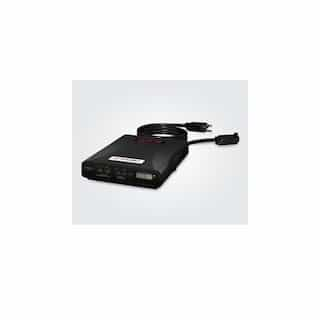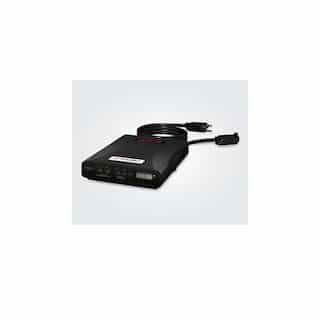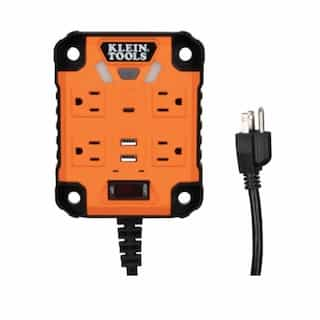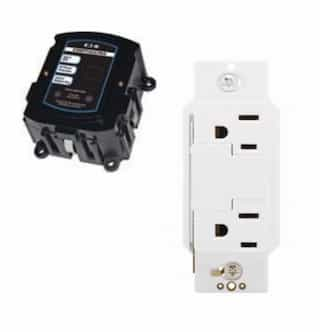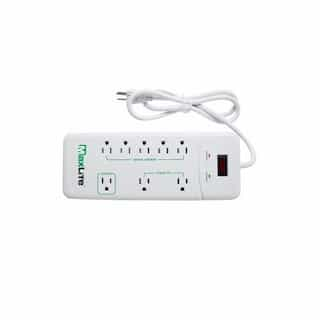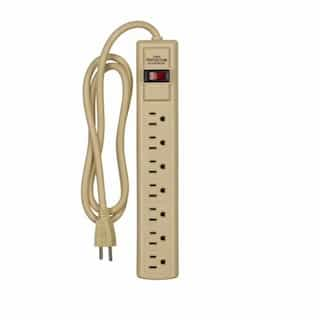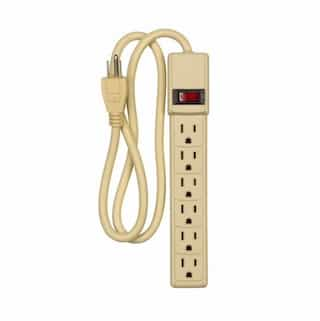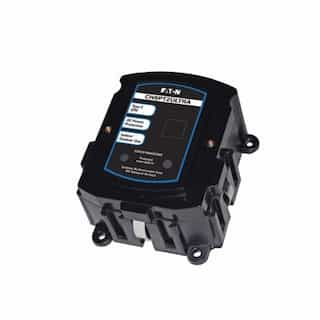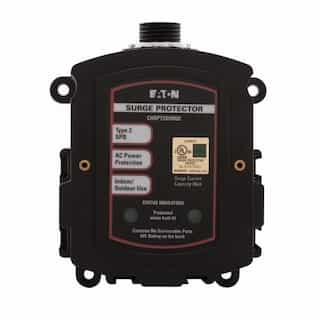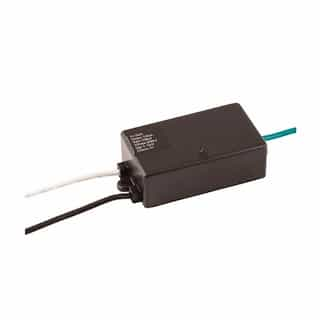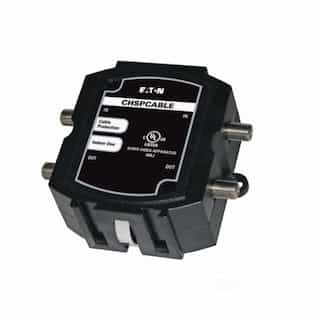What is a power surge?
Simply put, this is when the electricity supply to connected devices becomes temporarily interrupted (short circuit). Ranging from mild to serious, power surges occur when:
- A large appliance is turned on
- An electrical transformer is hit and damaged
- Lightning strikes
- Your electric company delivers unsteady streams of power
Major surges can cause electronics to melt, fry, and malfunction. Small to micro surges cause damage in the long run, with wires and circuits gradually degrading and eventually failing. This is why purchasing surge protection is typically the recommended choice.
What is a power strip?
A power strip contains multiple electrical sockets, which attach to the end of a long, flexible cable, similar to an extension cord. Often featuring flat plugs, the power strip itself plugs directly into a wall socket. This allows numerous devices to be powered by a single source. Power strips are primarily used in situations where electronics in a certain area outnumber available wall plugs. Imagine a workspace – a single power strip could supply power to a computer, monitor, telephone, printer, Wi-Fi router, smartphone charger, and more.
There are several types of power strips available. Depending on your needs, you can find everything from basic, plastic-coated power banks to commercial-grade outlets encased in metal boxes, as well as USB-A and USB power strips, USB-C ports, and other charging ports. Many power strips also come with a wall mount for convenience in organizing power cords.
What is the difference between a power strip and a surge protector?
Whereas power strips are a source providing power for multiple devices, surge protectors defend electronics against a power surge. While they look similar to power strips, surge protectors have a specialized circuit, which activates when higher electricity levels are detected. This circuit breaker redirects electricity into the ground, keeping it from moving into the device.
It’s important to note that surge protector power strips have their own plugs for devices, but the key difference is this special circuit that protects against power surges. This is similar to the way a ground fault circuit interrupter (GFCI) outlet works.
What is the difference between a power strip and a surge protector?
A Surge Protector will protect your electronics from unexpected spikes in power like the away a GFCI outlet works. The difference between a surge protector and a power strip is a surge protector will have a rating in Joules and a power strip will not. A surge protector will also have a maximum wattage capacity that it can handle during an electrical spike.
What shouldn't be plugged into a power strip?
Appliances and devices that require a high power output should never be plugged into a power strip, but directly into the wall instead. Common items that must be plugged into a wall outlet include:
- Adapters
- Air conditioners
- Air fryer
- Air fryers
- Blenders
- Coffee maker
- Gaming equipment
- Hair dryers and other hot tools
- Microwaves
- Other power strips or surge protectors
- Power tools
- Refrigerators, freezers, and mini-fridges/freezers
- Rice cookers
- Slow cooker
- Space heater
- Sump pumps
- Toasters
- Washing machines and dryers
How many things can I plug into a power strip?
Power strips commonly come with six, seven, eight, or 12 plugs, so you can plug in as many devices as you need. However, these devices should not be high-powered electronics and appliances, as mentioned in the list above. Rather, they should be common items that won’t overload the power strip, such as:
- Computers
- Digital clocks
- Lamps
- Monitors
- Phones
- Stereos
- Tablets
How often should I replace a power strip?
Some power strips can last for years before they begin to malfunction, with their lifespan largely depending on how it’s being used. However, there are some telltale signs that the power supply is not functioning properly and should be replaced, including:
- Cords that are knotted, melted, burned, discolored, frayed, or no longer straight
- Hot to the touch
- No power coming from one or several of the strip’s plugs
- Plug(s) dislodged from the receptacle with exposed metal prongs
What are the benefits of using a power strip?
The biggest benefits of power strips are:
- Being able to power multiple devices from a single source
- Conserving energy with on/off power switches and other options
- Gaining more plugs in an area that is short on outlets
- Grouping electrical wires for space efficiency and aesthetics
- Safety features, like regulated amperage and automatic tripping if the strip is too hot
- Various cord lengths to accommodate different interior design needs
Is it dangerous to plug a power strip into another?
Yes. Though it might be tempting to do this, especially in tight quarters like a home office with few available outlets, this is a dangerous practice called daisy-chaining or piggy-backing. It is a serious fire hazard to plug power strips into each other, as they are not designed to function this way. This is true for any size, from 6-outlet power strips to 12-outlet options.
What is a smart power strip?
Smart power strips work to reduce power usage and phantom power by cutting off electricity to devices in standby mode. For example, smart power strips know when you shut your TV, DVD player, or cable box off, so they cut the electricity supply for that device. This is because smart power strips are designed to prevent continuous energy consumption, as well as remove the hassle of unplugging the power cables of unused devices.
What is phantom power or power leakage?
Also referred to as standby power, phantom power is continued electricity use or leakage due to devices being plugged in but not turned on. In other words, small amounts of energy are centrally consumed, or leaked, even when gadgets are off. To reduce phantom power, which can exceed more than 40 watts in some cases, here are some top recommendations:
- Use a power strip with on/off switches.
- Switch to Energy Star products.
- Unplug items when not in use.
- Choose a smart power strip.
- Install more power outlets to reduce the need for power outlet strips.
Buy Power Strips from HomElectrical
No matter your power strip or surge protector needs, our team is here to help. HomElectrical is home to an ever-growing inventory of electrical supplies, from power strips and greenhouse HVAC to commercial lighting. For more information about our products and warranties, browse our selection or register for a HomElectrical account today.
